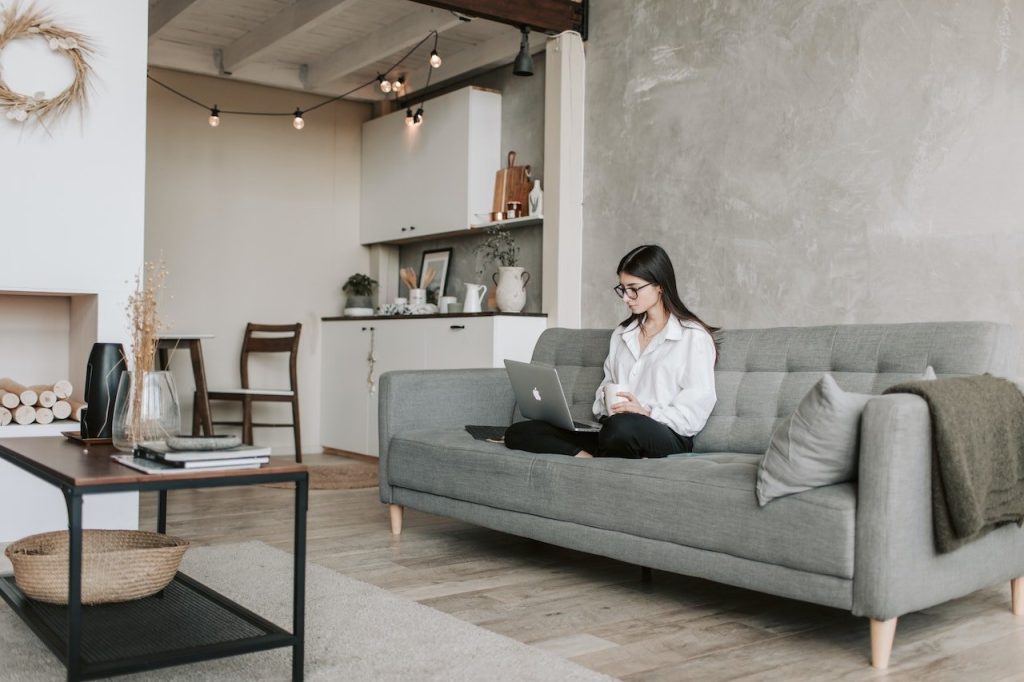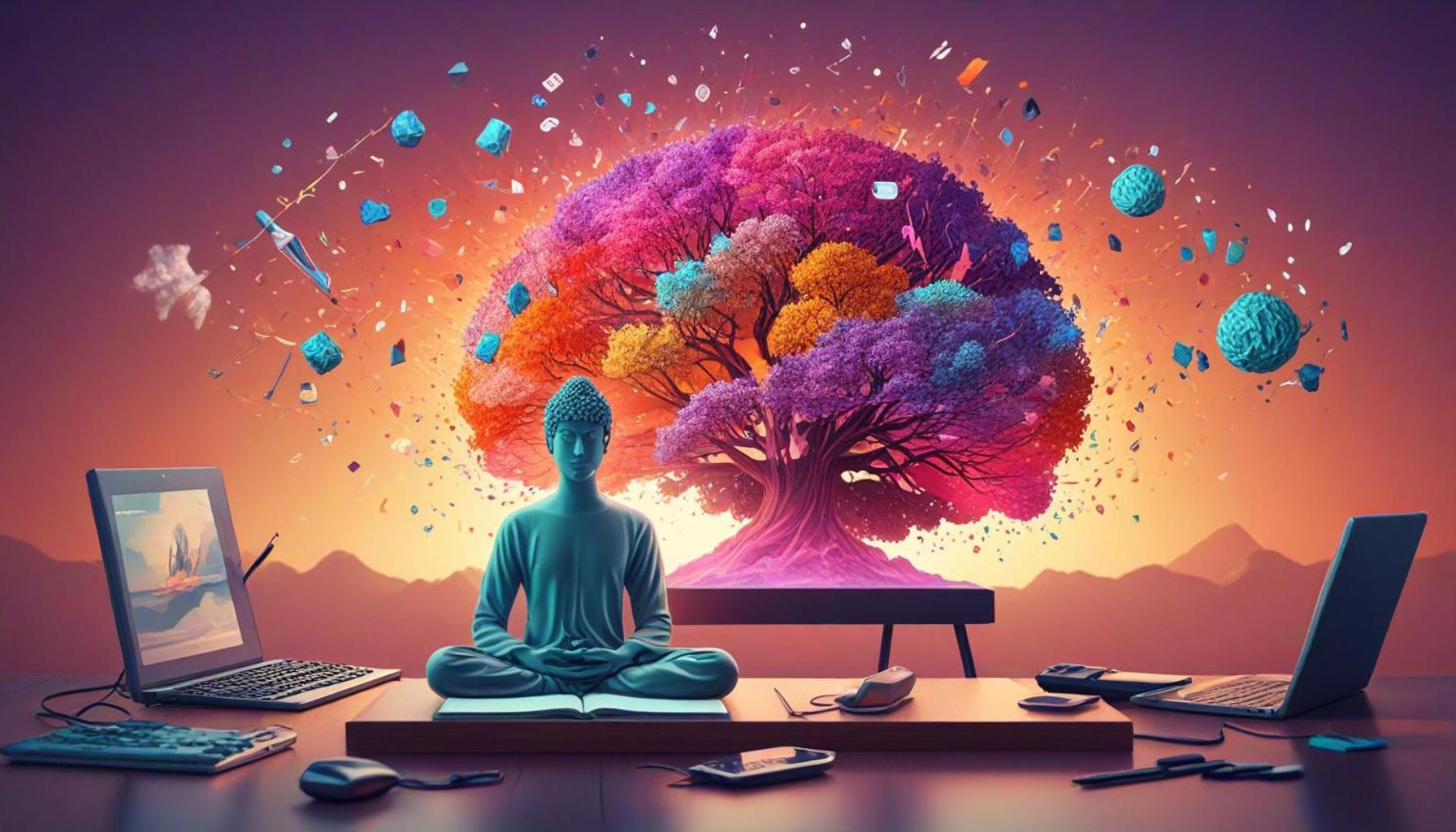How Mindfulness Can Facilitate the Transition to a Minimalist Lifestyle

The Rise of Minimalism and Mindfulness
In an era characterized by rapid consumerism, many individuals find themselves overwhelmed by the sheer volume of choices, possessions, and distractions surrounding them. The collective yearning for simplicity has given rise to the practice of minimalism, encouraging people to distill their lives down to what truly matters. This voyage towards simplicity doesn’t merely involve clearing out closets or shedding physical items, but also requires a deeper introspection and the cultivation of mindfulness.
At its core, mindfulness is the practice of being present and fully engaged with the moment, free from distractions and judgment. It is a mental state that fosters greater awareness of our thoughts and feelings, promoting a more intentional way of living. By integrating mindfulness into their daily routines, individuals can adeptly navigate the complexities of modern life and, in turn, embrace a minimalist lifestyle. Here are a few ways mindfulness can assist in this transformative journey:
- Assess their true needs: Mindfulness allows individuals to pause and reflect on what is genuinely necessary in their lives. For example, while decluttering one’s wardrobe, a mindful approach encourages asking questions like, “Do I wear this often?” or “Does this item bring me joy?” Such inquiries reveal the distinction between need and want.
- Let go of unnecessary possessions: Building a connection to basic needs can create a non-attachment to material goods. A poignant example is the popular movement of capsule wardrobes, where individuals select a limited number of clothing items that pair well together, emphasizing quality over quantity.
- Focus on experiences over things: Mindfulness promotes prioritizing meaningful experiences over material accumulation. Studies suggest that people derive greater satisfaction from adventures and interactions rather than from monetary possessions. For instance, families that invest in vacations often report more lasting happiness than those who purchase expensive gadgets.
As individuals cultivate a mindful approach, they begin to recognize that emotional attachments to objects can hinder their progress. Memories tied to possessions, such as a childhood toy, can evoke strong feelings, creating barriers to letting go. However, with a mindful perspective, there’s a shift from clinging to these items as markers of identity to viewing them as mere artifacts of the past.
Transitioning to minimalism through mindfulness is less about deprivation and more about enriching one’s quality of life. It fosters an environment where individuals can thrive, unhindered by clutter. Practicing mindfulness in everyday activities—be it through mindful eating, walking, or even in conversations—can reinforce this shift toward simplicity.
This article aims to explore the intricate relationship between mindfulness and minimalism, offering practical strategies for effectively merging these two concepts. By understanding their interplay, readers can embark on a journey toward a more intentional, deliberate, and simplified existence, enhancing their overall well-being in a consumer-driven society.

EXPLORE MORE: Click here for essential organization strategies
Understanding the Intersection of Mindfulness and Minimalism
The journey to minimalism often involves not just a physical decluttering, but also an emotional and psychological shift. By incorporating mindfulness into this journey, individuals can uncover insights into their motivations and habits related to possessions. This intersection of mindfulness and minimalism encourages a deeper understanding of what adds genuine value to one’s life. Careful reflection fosters clarity amidst the noise of consumer culture, revealing what is truly essential.
One of the significant benefits of practicing mindfulness is the enhanced ability to assess and refine our true needs. In a society that equates self-worth with material wealth, it can be difficult to differentiate between genuine desires and societal pressures. Mindfulness challenges this notion by emphasizing self-awareness and introspection. By regularly engaging in mindfulness practices, such as meditation or conscious breathing, individuals can develop a clearer sense of what is necessary for their well-being.
- Cultivating a sense of gratitude: Mindfulness helps to shift focus away from what one lacks to appreciating what one has. When individuals practice gratitude, they are less likely to yearn for more, recognizing the value of their current possessions.
- Strengthening decision-making skills: Mindfulness fosters a greater awareness of impulsive buying tendencies. By allowing oneself to pause and reflect before making a purchase, individuals can make more intentional choices that align with their minimalist goals.
- Reducing stress and anxiety: The act of clutter can often lead to overwhelming feelings. Mindfulness techniques, such as grounding exercises, can help mitigate stress, making it easier to confront the emotional aspects of letting go of unnecessary items.
Furthermore, embracing mindfulness cultivates a profound sense of non-attachment to material goods. This is particularly evident in the concept of the capsule wardrobe, which encourages individuals to curate a small selection of versatile clothing items—highlighting quality over quantity. By experimenting with a capsule wardrobe, people can learn to appreciate the value of fewer, well-loved items rather than accumulating excess clothing. This exercise not only serves a practical purpose but also acts as a reflective practice, reinforcing the values of minimalism.
Transitioning to a minimalist lifestyle through mindfulness is not solely about shedding items; rather, it’s about fostering a sustainable mindset that prioritizes intentional living. Mindfulness can serve as a guiding compass, helping individuals navigate through a consumer-driven society while remaining true to their desires for simplicity and fulfillment. By adopting this approach, individuals can experience a more enriching quality of life, ultimately leading to a gradual, yet profound, transformation.
In the subsequent sections of this article, we will delve deeper into practical strategies for harmonizing mindfulness with minimalism, exploring ways to cultivate this powerful synergy and elevate one’s lifestyle. Whether you are just starting your journey or seeking to refine your minimalistic endeavors, the following insights will provide valuable guidance on this fulfilling path.
How Mindfulness Enhances Minimalism
Mindfulness plays a pivotal role in facilitating the transition to a minimalist lifestyle, allowing individuals to cultivate a greater awareness of their thoughts, feelings, and possessions. By being more present, you can discern what truly adds value to your life and what simply clutters your physical and mental space. This intentional awareness fosters a deeper connection with your surroundings and helps you appreciate the beauty of simplicity.One key aspect of mindfulness is the practice of intentional living. When you approach each day with mindfulness, you are encouraged to reflect on your choices. For instance, consider why you may feel the urge to accumulate items or hold onto unnecessary things. With this introspection, you can identify emotional triggers or societal pressures that lead to clutter. By recognizing these influences, you gain the power to detach from material possessions that do not serve your well-being.Moreover, mindfulness promotes emotional regulation, allowing you to navigate the challenges that arise during your transition to minimalism. Emotions such as anxiety and fear may surface when letting go of items, especially those tied to memories. Practicing mindfulness techniques, such as meditation or deep breathing, can provide you with tools to confront these feelings, enabling you to move forward with confidence and clarity.Incorporating mindfulness into your decluttering process can significantly impact how you perceive and engage with your belongings. Instead of rushing through the process, mindfulness encourages you to take your time, examining each item for its true purpose in your life. This thoughtful approach not only simplifies your environment but enhances your emotional wellness, creating a space that truly reflects your values.As you embark on this transformational journey, consider how integrating mindfulness practices can further your efforts in embracing a minimalist lifestyle. The synergy between these two philosophies opens up new pathways for self-discovery, helping you realize that a fulfilling life often emerges from embracing less rather than more.
DIVE DEEPER: Click here to simplify your shopping experience</p
Practical Mindfulness Techniques for Embracing Minimalism
As the journey towards a minimalist lifestyle unfolds, incorporating mindfulness techniques can greatly enhance the process. These practices not only aid in assessing what to keep and what to let go, but they also facilitate a smoother transition by reinforcing the intention behind minimizing possessions.
Mindful decluttering is one technique that can transform this often-arduous task into a positive and reflective experience. Instead of hastily tossing items into boxes or bags, approach each item with a mindful attitude. This means taking a moment to hold the item, reflecting on its significance, and considering whether it contributes to your sense of well-being. You might ask yourself: Does this item spark joy? Is it truly necessary? By engaging in this reflective practice, individuals can cultivate a deep connection with their belongings, allowing for more intentional choices about what to keep.
- Time blocks for decluttering: Dedicate specific time blocks solely for decluttering activities. Use mindfulness techniques, such as breathing exercises, to center yourself before starting. This practice can reduce feelings of overwhelm as it transforms decluttering into a focused, manageable activity, rather than an insurmountable chore.
- Journaling: Keep a mindfulness journal where you document thoughts and feelings throughout your decluttering journey. Take note of what items you feel attached to, as well as those that bring relief when released. This practice not only enhances self-awareness but also tracks your progress and emotional state.
Moreover, integrating mindful shopping is essential in maintaining a minimalist lifestyle. This approach advocates for conscious consumption, which entails being aware of your impulses and the motivations behind your purchases. Before making a purchase, practice the “24-Hour Rule”—allow yourself a full day to mull over the decision. This technique helps in differentiating between a genuine need and a fleeting desire, thus preventing unnecessary clutter in the future.
Another beneficial strategy is engaging in mindful practices for emotional resilience. Emotions can significantly influence the attachment we have to our possessions. When faced with the challenge of letting go, it’s easy to succumb to feelings of nostalgia or guilt. By practicing mindfulness techniques such as meditation or deep breathing, you can cultivate emotional resilience. Mindfulness allows individuals to confront these emotions non-judgmentally, enabling them to better navigate the attachment process without the accompanying stress.
Furthermore, practicing mindfulness in daily life is essential for maintaining the minimalist mindset beyond the decluttering phase. Simple acts of being present, whether it’s savoring a meal or appreciating nature, can reinforce the core tenets of minimalism. Such experiences remind individuals that fulfillment does not come from accumulation, but from living with intention and gratitude for what one has.
In these ways, the thoughtful integration of mindfulness can lead to a holistic approach in adopting a minimalist lifestyle. It is a continuous journey of self-discovery, clarity, and emotional balance, paving the way for a life filled with meaning and purpose, free from the burdens of excess.
DIVE DEEPER: Click here to learn more
Conclusion: Embracing Minimalism through Mindful Living
The integration of mindfulness into the journey toward a minimalist lifestyle offers a transformative experience that goes beyond the mere act of reducing possessions. By cultivating a mindful attitude, individuals can deepen their understanding of their belongings and their emotional connections to them. This process not only makes decluttering more manageable but also ensures that the items we choose to keep truly enhance our lives.
As we’ve explored, the practices of mindful decluttering, conscious consumption, and emotional resilience play pivotal roles in facilitating this transition. Utilizing techniques such as time-blocking for decluttering and journaling can provide clarity while fostering self-awareness. Furthermore, engaging in mindful shopping encourages a thoughtful approach to purchases, ultimately preventing future clutter.
In a world increasingly dominated by materialism and consumerism, mindfulness serves as a counterbalance, reminding us that true fulfillment arises not from accumulation but from intentional living. Adopting a minimalist mindset rooted in mindfulness invites us to savor moments, cherish experiences, and express gratitude for what we have, creating a more meaningful existence. As you embark upon your minimalism journey, remember that it is less about the quantity of items in your life and more about the quality of your experiences and the clarity of your intentions.
In conclusion, embracing mindfulness as a foundational practice in your shift towards minimalism can harmonize your surroundings and your mental state, paving the way for a lifestyle that celebrates simplicity, purpose, and emotional depth. Ponder upon how mindfulness can not only guide your path to minimalism but also enrich your overall quality of life.



